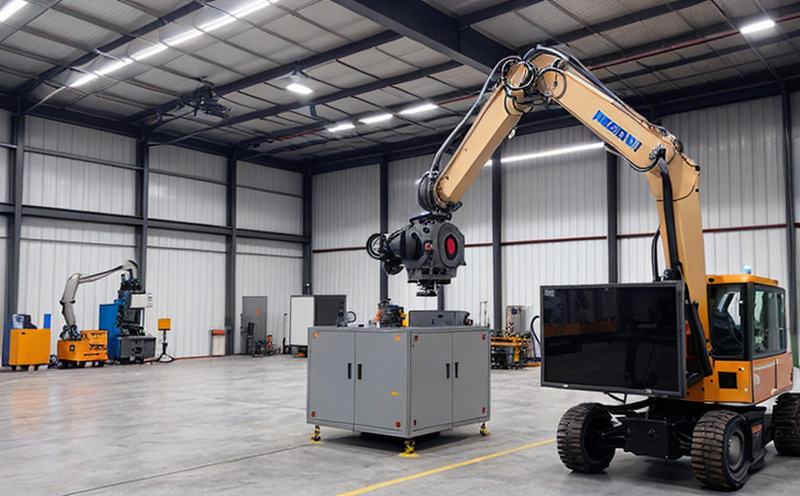ISO 22166-3 Interoperability Testing of Industrial Robotics Systems
The ISO 22166 series is a set of standards designed to ensure that industrial robots and automation systems can operate seamlessly in interconnected environments. ISO 22166-3 specifically focuses on interoperability testing, ensuring that different robotic systems from various manufacturers can communicate effectively with each other.
Interoperability is crucial for modern manufacturing plants where multiple robotic systems are used to perform complex tasks. By adhering to this standard, companies ensure their robots can work harmoniously within a single facility or across distributed networks. This not only enhances operational efficiency but also reduces downtime and maintenance costs.
The testing process involves simulating real-world scenarios that the robotic system might encounter in an industrial setting. These tests are designed to evaluate how well the robot adheres to communication protocols, data exchange formats, and error handling mechanisms specified by ISO 22166-3. Compliance with these standards ensures that robots from different suppliers can interact without issues.
At our laboratory, we use state-of-the-art facilities equipped with advanced simulation software and hardware to conduct comprehensive interoperability tests. Our team of experts works closely with clients to understand their specific needs and tailor the testing process accordingly. From initial setup to final analysis, every step is meticulously documented to provide clients with detailed insights into how well their robotic systems perform under different conditions.
One key aspect of our ISO 22166-3 testing service is its ability to identify potential compatibility issues early in the development phase. This proactive approach allows manufacturers and integrators to make necessary adjustments before deploying robots into production environments, thereby minimizing risks associated with integration challenges later on.
We also offer post-installation support services, which include ongoing monitoring of robotic systems after they have been deployed at client sites. Our team continuously evaluates performance metrics against predefined benchmarks set by ISO 22166-3 to ensure long-term reliability and maintainability of the installed equipment.
- Testing robotic arms for seamless communication with other factory automation devices
- Evaluating integration capabilities between different brands of industrial robots
- Assuring secure data transfer protocols among multiple robotic systems in a single facility
- Verifying error recovery procedures during unexpected failures or network disruptions
Customer Impact and Satisfaction
Implementing ISO 22166-3 interoperability testing brings numerous benefits to customers, enhancing both operational efficiency and overall satisfaction. Firstly, it reduces the risk of costly integration errors by ensuring that all robotic systems work together flawlessly from the outset.
By adhering strictly to international standards like ISO 22166-3 during design and manufacturing stages, companies demonstrate their commitment to quality assurance and customer satisfaction. This attention to detail translates into higher levels of trust and loyalty among clients who appreciate these rigorous testing procedures.
Moreover, successful completion of such tests can lead to better alignment with industry trends towards more flexible and adaptable manufacturing processes. As industries continue evolving rapidly due to technological advancements, having robust interoperability measures in place helps organizations stay ahead of the curve.
Competitive Advantage and Market Impact
Adopting ISO 22166-3 interoperability testing provides significant competitive advantages for businesses operating in the industrial robotics sector. In today’s highly competitive market, where efficiency and innovation are paramount, being able to offer products that comply with these stringent standards sets firms apart from their competitors.
Compliance signals to potential customers that your company prioritizes excellence in all areas of its operations, including product design, manufacturing processes, and service delivery. This reputation fosters stronger relationships with key stakeholders such as end users, suppliers, and partners.
The ability to seamlessly integrate robotic systems into existing infrastructure also opens up new opportunities for growth within the market. As more companies look towards automation solutions to streamline operations, those who already have compliant products in place will naturally attract greater attention from these prospective clients.
Use Cases and Application Examples
- Automotive Manufacturing: Ensuring that robotic arms used in assembly lines can communicate efficiently with other components of the production line.
- Pharmaceutical Packaging: Verifying data exchange between packaging machines and quality control systems to ensure product safety.
- Welding Robots: Assessing interoperability between welding robots from different manufacturers to enhance productivity in large-scale manufacturing facilities.





